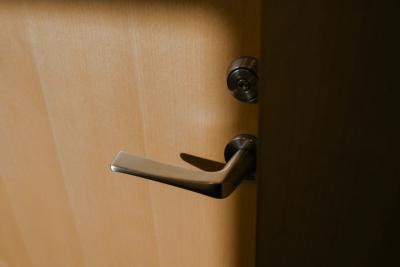Pocket doors are stylish and highly functional additions to any home, offering aesthetic appeal and practical benefits. One primary advantage of pocket doors is their ability to save space. Unlike traditional swing doors, which require a specific clearance area to open, pocket doors slide effortlessly into a compartment within the wall. This makes them ideal for smaller rooms or tight spaces where a conventional door would be inconvenient.
These doors come in various designs, materials, and finishes, so you can choose options that seamlessly integrate with the existing decor. We’ll share valuable tips to help you avoid common mistakes and get the necessary tools and materials to make your project as efficient as possible, ensuring that your new pocket door is installed correctly and functions flawlessly.
Common Mistakes When Installing Pocket Doors
Installing can only be done perfectly if the preparation is done well. So that’s why here are the most common mistakes during the preparation and installation processes:
- Poor wall preparation. If the wall isn't wide and deep enough to accommodate the pocket door frame, it can lead to structural issues later.
- Incorrect frame installation. This misalignment may lead to problems such as the door sticking when opening or closing or not sliding evenly along its track.
- Neglecting the doorway. A badly fitted doorway may lead to difficulty opening and closing, gaps that compromise insulation, or even structural weaknesses that affect surrounding walls.
- Improper tool selection. Not only does this increase the likelihood of damaging the door itself, but it also raises the risk of affecting the surrounding structure. This can cause misalignment, excessive force application, or even irreversible harm to the door and its frame.
- Skipping instructions. These errors not only complicate the installation process but may also compromise the functionality and longevity of the door.
Pocket Door Installation: How to Fit a Pocket Door Correctly
How do you install a pocket door before incorporating it into the interior design? Before installation, it’s essential to double-check your measurements, as accurate dimensions are crucial for ensuring a snug fit. Choose the right tools for the job and consider investing in quality tools since they can significantly simplify the installation process. Be mindful of the weight of your door and ensure that the track and rollers are adequately rated to support it.
During the installation, take your time and work slowly. Rushing can lead to misalignment or damage, which can cause problems later. Make sure to use a level throughout the process, continuously checking for level and plumb to avoid future issues.
After installation, it’s crucial to test the door by sliding it several times to ensure smooth operation. Lastly, inspect all hardware to confirm that screws and fasteners are secure and ensure that everything is in place for optimal functionality.
How to Fit a Pocket Door: A Step-by-Step Guide
For those wondering how to put in pocket door smoothly, we have prepared a detailed tutorial that you can follow for a successful installation.
- Prepare the doorway. First, determine whether your wall is suitable for a pocket door. Then, ensure the wall has enough room to accommodate the door and the pocket frame. Typically, you need at least double the width of the door. If a hinged door exists, remove it along with the frame and trim. Finally, carefully cut away drywall to expose the studs.
- Install the pocket door frame. Use our previous installation tips, and remember that each pocket door kit varies slightly. Follow the kit’s directions to assemble the frame components. Secure the pocket frame inside the wall cavity using screws and a level to ensure alignment. Add extra support where necessary to prevent sagging or wobbling over time.
- Attach the door to the track. Secure the metal track from the kit to the top of the doorway frame and attach the door to the track using the provided hardware, such as rollers or hinges.
- Finish the wall. Cut and install new drywall to cover the frame, leaving an opening for the pocket door to slide in and out. Use plaster or spackle to fill in any gaps.
- Install door hardware. Install a flush handle or a recessed pull, depending on the door's design. Avoid traditional knobs as they may interfere with the door’s sliding action. For bi-parting or dual-pocket doors, hinges may connect the panels.
Why Choose Pocket Doors for Your Home?
Pocket doors’ versatility suits various settings, including bathrooms, closets, laundry rooms, or stylish partitions between different areas. They provide a sleek, minimalist aesthetic that beautifully complements contemporary interiors. When installed correctly, pocket doors enhance accessibility, making them an excellent choice for creating barrier-free spaces within your home.
For those looking to buy truly stylish and functional pocket doors, UnitedPorte offers a wide selection of high-quality pocket doors, frames, and hardware to suit every style and budget. All our products are carefully curated to ensure durability and smooth operation so that you get the best value for your money. Browse our user-friendly site and enjoy fast, hassle-free delivery with reliable shipping options.





